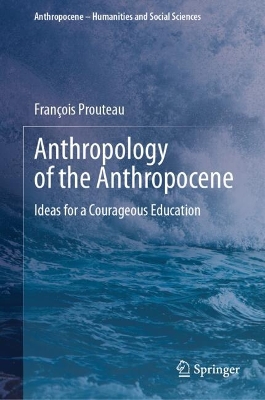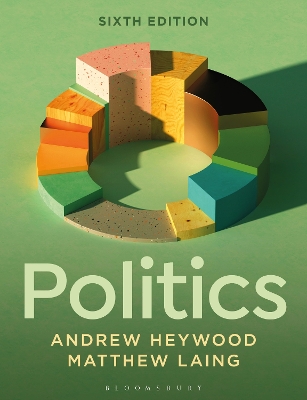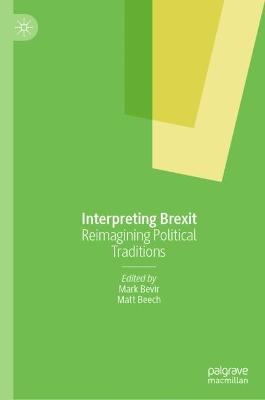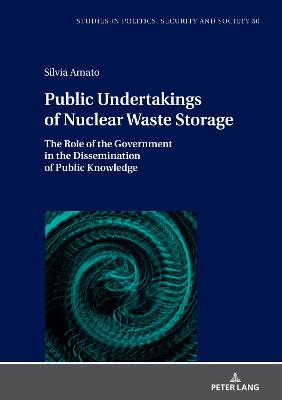Palgrave Handbook of Political Research Pedagogy
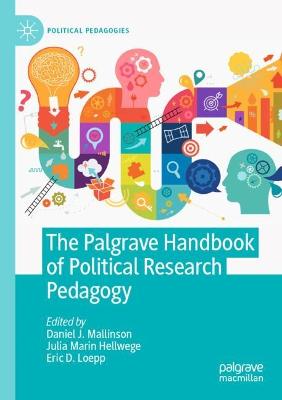 portes grátis
portes grátis
Palgrave Handbook of Political Research Pedagogy
Marin Hellwege, Julia; Loepp, Eric D.; Mallinson, Daniel J.
Springer Nature Switzerland AG
09/2022
430
Mole
Inglês
9783030769574
15 a 20 dias
633
Descrição não disponível.
Chapter 1: Introduction to Teaching the Research Process. - Part I: Teaching Information Literacy.- Chapter 2: Information Literacy Development of Undergraduate Political Science Student Researchers: The Instruction Librarian's Role.- Chapter 3: Should Research Methods Teach Information Literacy or Statistics? Why Not Both.- Chapter 4: The Politics of Identity and Teaching Information Literacy in Political Science.- Chapter 5: Using K12 Foundations to Teach Scientific Literacy in College Research Methods.- Chapter 6: Designing A Research Methods Course for a Skeptical Classroom.- Chapter 7: Journeys Beyond Information Literacy: Applying a Metaliteracy Framework to Political Science.- Chapter 8: "The Savvy Consumer of Political Science Research.- Chapter 9: Zen and the Art of Teaching Methods Without a - Methods Course.- Part II: Teaching Research Design.- Chapter 10: Building Qualitative Methods Skills Through Research Design.- Chapter 11: Teaching Research Design with Authenticity.- Chapter 12: Research Design as Professional Development and Empowerment: Equipping Students to See, Analyze, and Intervene in Political Realities.- Chapter 13: Teaching Multidisciplinary Research Methods at a Small Liberal Arts College.- Chapter 14: Less Can Be More: Encouraging Mastery of Research Design in Undergraduate Research Methods.- Chapter 15: Research Methods: Who am I and Why am I Here?.- Chapter 16: The Inquiry's the Thing: Teaching Quantitative Research Without Teaching Statistical Software," Debra Leiter.- Chapter 17: Teaching Research Design: The Gender and Politics Lab and Reflections on the Lab Model for the Social Sciences.- Chapter 18: Researching & Teaching Political Science through Arts-Based Inquiry Methods.- Chapter 19: Embedding Feminist Pedagogy in Political Science Research Design With Reflections on Critical Theory and the Social Construction of Reality.- Chapter 20: Black Lady Classroom," Nadia E. Brown, Jasmine Jackson, Aayana Ingram.- Chapter 21: How theResearch Design Can be a Structure, a Process, and a Product for Learning Political Science.- Chapter 22: The Success of research methods at the department level.- Part III: Teaching Research Methods.- Chapter 23: Traveling Along with an Accidental Academic: Doing and Teaching Research.- Chapter 24: Statistical Skills for the Workplace: A Practical Approach to Teaching Methods with Excel.- Chapter 25: Sneaking In Statistics.- Chapter 26: Pedagogical Recommendations for Applied Statistics Courses.- Chapter 27: The Accidental Methodologist.- Chapter: 28 From Step-Child to Innovative Leader: Political Science Research Methods over the Decades.- Chapter: 29 Teach Me If You Can: Teaching Political Science Majors Statistics at a Hispanic-serving Institution.- Chapter 30: Excel, in More Ways than One," Whitney Ross-Manzo.- Part IV: Teaching Research Writing.- Chapter 31: Research Articles, Not Research Papers: Empowering Students Through Research Writing.- Chapter 32: Integrating Research Writing and Research Methods: Toward a more seamless Curriculum.- Chapter 33: Empowering Students by Teaching Research-Paper Writing as a Foundational Methods Course.- Chapter 34: From 'Good' to 'Effective': Teaching Writing Skills Explicitly in Political Science.- Chapter 35: Revising the Revising Process of Writing in Upper Level Political Science Research Methods.- Chapter: 36: Systematic ELA Challenges at Post-Secondary Institutions: Why Many Two-Year Students Aren't Prepared for College-Level Writing.- Chapter 37: Teaching research writing to undergraduates in political science and public administration in the online environment.- Chapter 38: Teaching Methods in the Context of a Writing Intensive Course.
Este título pertence ao(s) assunto(s) indicados(s). Para ver outros títulos clique no assunto desejado.
pedagogy;research methodology;research design;information literacy;statistics;research writing
Chapter 1: Introduction to Teaching the Research Process. - Part I: Teaching Information Literacy.- Chapter 2: Information Literacy Development of Undergraduate Political Science Student Researchers: The Instruction Librarian's Role.- Chapter 3: Should Research Methods Teach Information Literacy or Statistics? Why Not Both.- Chapter 4: The Politics of Identity and Teaching Information Literacy in Political Science.- Chapter 5: Using K12 Foundations to Teach Scientific Literacy in College Research Methods.- Chapter 6: Designing A Research Methods Course for a Skeptical Classroom.- Chapter 7: Journeys Beyond Information Literacy: Applying a Metaliteracy Framework to Political Science.- Chapter 8: "The Savvy Consumer of Political Science Research.- Chapter 9: Zen and the Art of Teaching Methods Without a - Methods Course.- Part II: Teaching Research Design.- Chapter 10: Building Qualitative Methods Skills Through Research Design.- Chapter 11: Teaching Research Design with Authenticity.- Chapter 12: Research Design as Professional Development and Empowerment: Equipping Students to See, Analyze, and Intervene in Political Realities.- Chapter 13: Teaching Multidisciplinary Research Methods at a Small Liberal Arts College.- Chapter 14: Less Can Be More: Encouraging Mastery of Research Design in Undergraduate Research Methods.- Chapter 15: Research Methods: Who am I and Why am I Here?.- Chapter 16: The Inquiry's the Thing: Teaching Quantitative Research Without Teaching Statistical Software," Debra Leiter.- Chapter 17: Teaching Research Design: The Gender and Politics Lab and Reflections on the Lab Model for the Social Sciences.- Chapter 18: Researching & Teaching Political Science through Arts-Based Inquiry Methods.- Chapter 19: Embedding Feminist Pedagogy in Political Science Research Design With Reflections on Critical Theory and the Social Construction of Reality.- Chapter 20: Black Lady Classroom," Nadia E. Brown, Jasmine Jackson, Aayana Ingram.- Chapter 21: How theResearch Design Can be a Structure, a Process, and a Product for Learning Political Science.- Chapter 22: The Success of research methods at the department level.- Part III: Teaching Research Methods.- Chapter 23: Traveling Along with an Accidental Academic: Doing and Teaching Research.- Chapter 24: Statistical Skills for the Workplace: A Practical Approach to Teaching Methods with Excel.- Chapter 25: Sneaking In Statistics.- Chapter 26: Pedagogical Recommendations for Applied Statistics Courses.- Chapter 27: The Accidental Methodologist.- Chapter: 28 From Step-Child to Innovative Leader: Political Science Research Methods over the Decades.- Chapter: 29 Teach Me If You Can: Teaching Political Science Majors Statistics at a Hispanic-serving Institution.- Chapter 30: Excel, in More Ways than One," Whitney Ross-Manzo.- Part IV: Teaching Research Writing.- Chapter 31: Research Articles, Not Research Papers: Empowering Students Through Research Writing.- Chapter 32: Integrating Research Writing and Research Methods: Toward a more seamless Curriculum.- Chapter 33: Empowering Students by Teaching Research-Paper Writing as a Foundational Methods Course.- Chapter 34: From 'Good' to 'Effective': Teaching Writing Skills Explicitly in Political Science.- Chapter 35: Revising the Revising Process of Writing in Upper Level Political Science Research Methods.- Chapter: 36: Systematic ELA Challenges at Post-Secondary Institutions: Why Many Two-Year Students Aren't Prepared for College-Level Writing.- Chapter 37: Teaching research writing to undergraduates in political science and public administration in the online environment.- Chapter 38: Teaching Methods in the Context of a Writing Intensive Course.
Este título pertence ao(s) assunto(s) indicados(s). Para ver outros títulos clique no assunto desejado.

